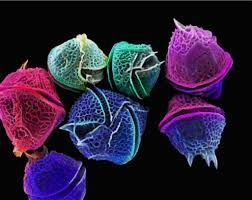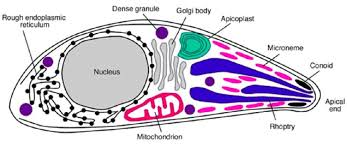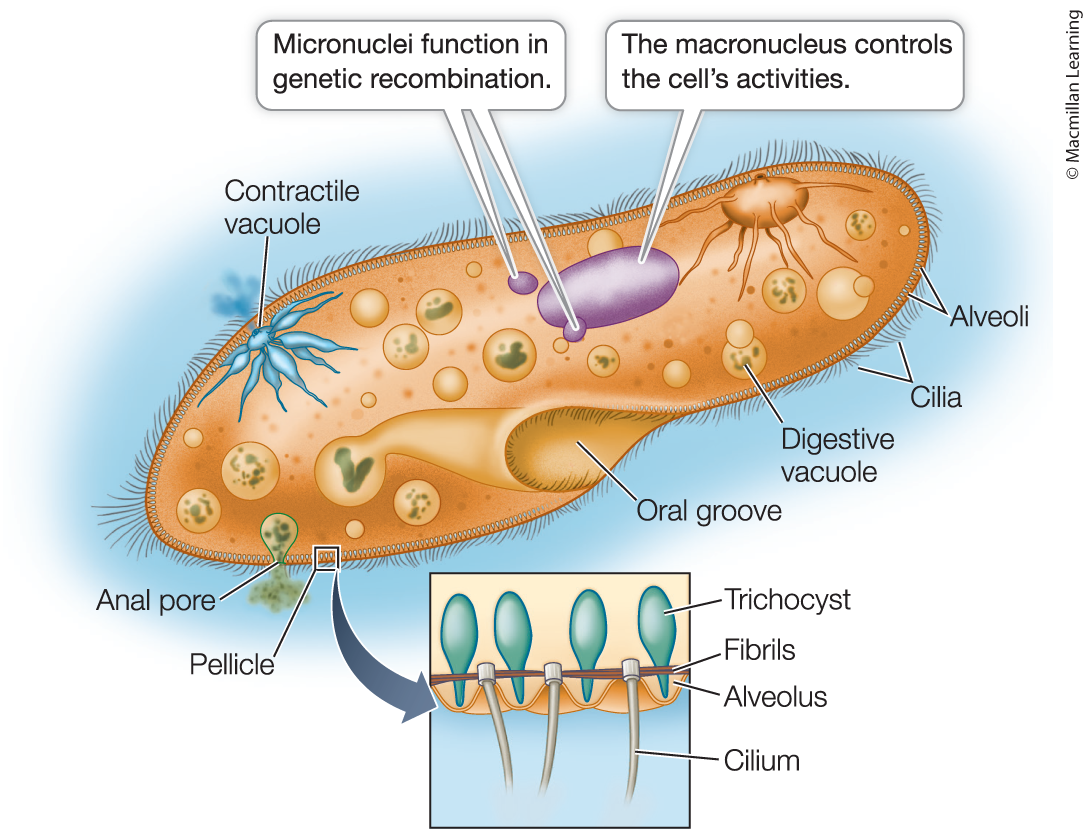eukaryotes
1/5
There's no tags or description
Looks like no tags are added yet.
Name | Mastery | Learn | Test | Matching | Spaced |
|---|
No study sessions yet.
6 Terms
Alveolates
have alveoli: small sacs below the membrane
unicellular
mostly photosynthetic
acquire plastids via secondary endosymbiosis
dinoflagellates, apicomplexans, ciliates
dinoflagellates
photoautotrophic
mostly microscopic
marine
primary producers
two flagella
many are bioluminescent
ex. Zooxanthellae

apicomplexans
apical complex: mass of organelles that help the parasite enter the host cell
pathogenic and always parasitic
complex life cycle, multiple hosts
ex. toxoplasmosis

ciliates
several cilia for motion
heterotrophs
complex body forms, two types of nuclei
ex. paramecium

stramenopiles
two unequal flagella, the longer one with hairs
diatoms, brown algae, oomycetes
unicellular, colonial, or multicellular
acquire plastid via secondary endosymbiosis
